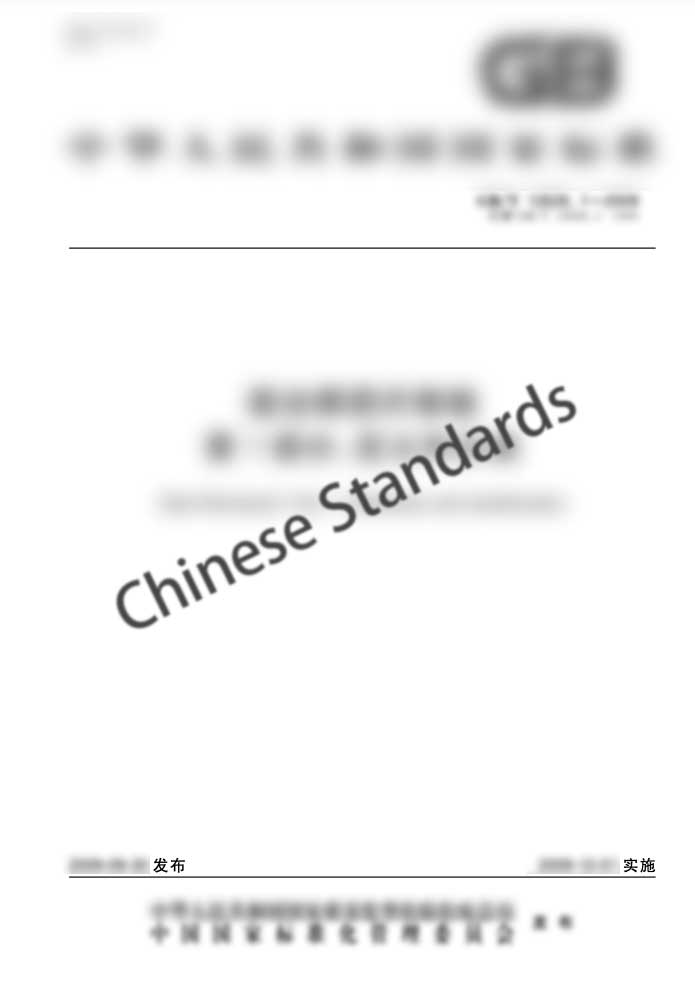GB/T 18978.16-2018
Ergonomic requirements for office work with visual display terminals (VDTs).Part 16:Direct manipulation dialogues

- Standard No.
- GB/T 18978.16-2018
- Language
- Chinese
- Release Date
- 2018
- Published By
- General Administration of Quality Supervision, Inspection and Quarantine of the People‘s Republic of China
- Lastest
- GB/T 18978.16-2018
- Scope
- This Part of GB/T 18978 provides guidelines for the design of direct manipulation dialogs. In a direct manipulation dialog, the user manipulates objects directly on the screen. For example: using input devices to point, move and/or change the physical characteristics (or values) of these objects. These objects are usually concrete and graphical, representing abstract software structures or functions, and can generally be divided into two categories: a) task objects: artifacts used in the real world to support user tasks (e.g., a page, A metaphorical description of a pen, a wrench, a diagram, etc.). b) Interface Objects: Objects introduced in an interactive interface by which a user performs tasks related to the use of a computer program or system. The introduced objects may be real-world entities, but their metaphors are not necessarily directly related to the user's real work tasks (eg, buttons, sliders, windows, screens, etc.). Objects and their object descriptions on the current display are referred to as objects, except in some clear distinctions. This section does not cover interfaces that use stereoscopic or virtual reality technology. In practice, the term direct manipulation is often used interchangeably with graphical user interface (GUI). However, other dialog techniques like menu dialogs or command dialogs are often used in GUIs as well. Although GUIs have many direct manipulation features, not every user input in a GUI can be called direct manipulation. For example, moving the document icon to the printer icon indicates that the document is to be printed. This operation is a more advanced direct operation than clicking the "print" button with the mouse. This section covers usability issues for direct manipulation dialogs. Recommendations for GUI components are only given if they are explicitly related to direct manipulation functionality. Directly manipulating certain features of the dialog, such as step-by-step typing, may be less efficient (for example, if someone wishes to delete all files beginning with the letter "d"). Therefore, other interaction techniques, such as command input or menus, may be more suitable, and often these techniques can be used as a supplement to direct manipulation.
GB/T 18978.16-2018 Referenced Document
- GB/T 18978.12-2009 Ergonomic requirements for office work with visual display terminals(VDTs).Part 12:Presentation of information
- GB/T 18978.13-2009 Ergonomic requirements for office work with visual display terminals(VDTs).Part 13:User guidance
- ISO 9241-14:1997 Ergonomics requirements for office work with visual display terminals (VDTs) - Part 14: Menu dialogues
- ISO/IEC 11581-1 Information technology - User system interfaces and symbols - Icon symbols and functions - Part 1: Icons - General
- ISO/IEC 11581-2 Information technology - User system interfaces and symbols - Icon symbols and functions - Part 2: Object icons
- ISO/IEC 11581-3 Information technology - User system interfaces and symbols - Icon symbols and functions - Part 3: Pointer icons
GB/T 18978.16-2018 history
- 2018 GB/T 18978.16-2018 Ergonomic requirements for office work with visual display terminals (VDTs).Part 16:Direct manipulation dialogues
GB/T 18978.16-2018 -All Parts
GB/T 18978.1-2003 Ergonomic requirements for office work with visual display terminals (VDTs)--Part 1: General introduction
GB/T 18978.10-2004 Ergonomic requirements for office work with visual display terminals(VDTs)-Part 10:Dialogue principles
GB/T 18978.11-2004 Ergonomic requirements for office work with visual display terminals(VDTs)-Part 11:Guidance on usability
GB/T 18978.12-2009 Ergonomic requirements for office work with visual display terminals(VDTs).Part 12:Presentation of information
GB/T 18978.13-2009 Ergonomic requirements for office work with visual display terminals(VDTs).Part 13:User guidance
GB/T 18978.143-2018 Ergonomics of human-system interaction.Part 143:Forms
GB/T 18978.151-2014 Ergonomics of human-system interaction.Part 151:Guidance on World Wide Web user interfaces
GB/T 18978.16-2018 Ergonomic requirements for office work with visual display terminals (VDTs).Part 16:Direct manipulation dialogues
GB/T 18978.2-2004 Ergonomic requirements for office work with visual display terminals(VDTs)-Part 2:Guidance on task requirements
GB/T 18978.300-2012 Ergonomics of human-system interaction.Part 300:Introduction to electronic visual display requirements
GB/T 18978.304-2021 Ergonomics of human-system interaction—Part 304: User performance test methods for electronic visual displays
GB/T 18978.307-2015 Ergonomics of human-system interaction—Part 307: Analysis and compliance test methods for electronic visual displays
GB/T 18978.400-2012 Ergonomics of human-system interaction.Part 400:Principles and requirements for physical input devices